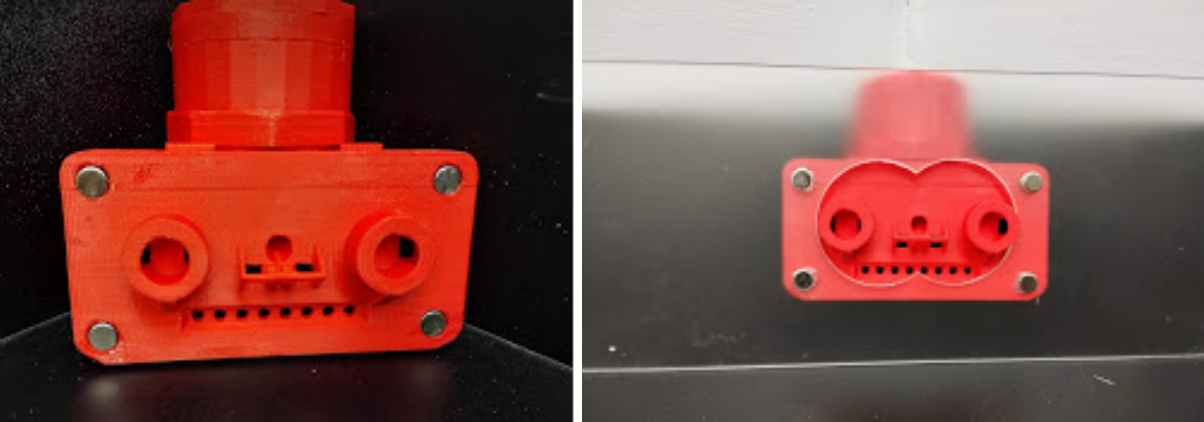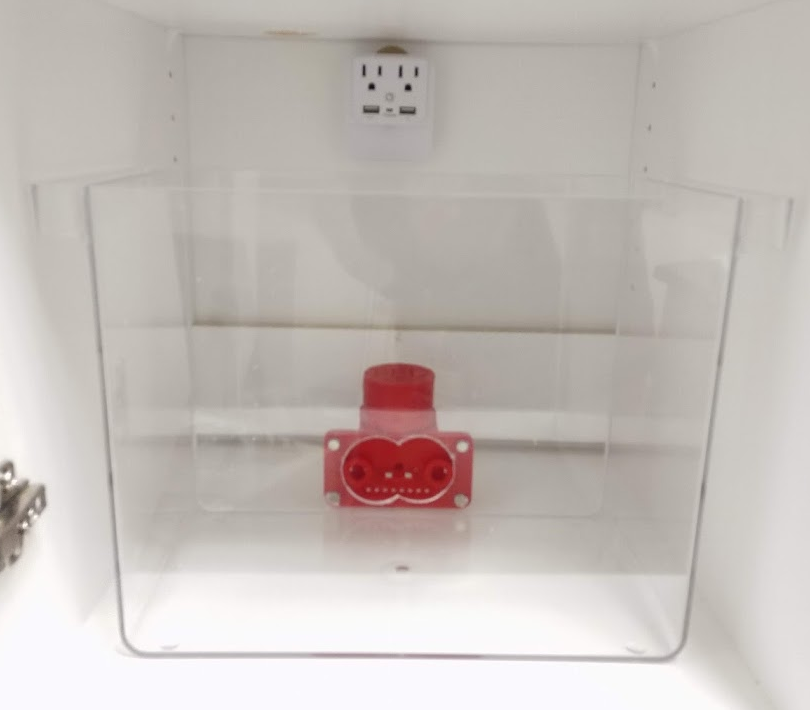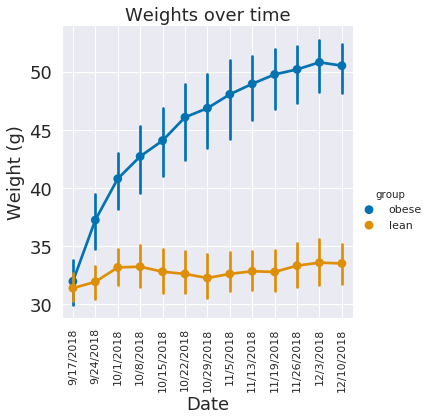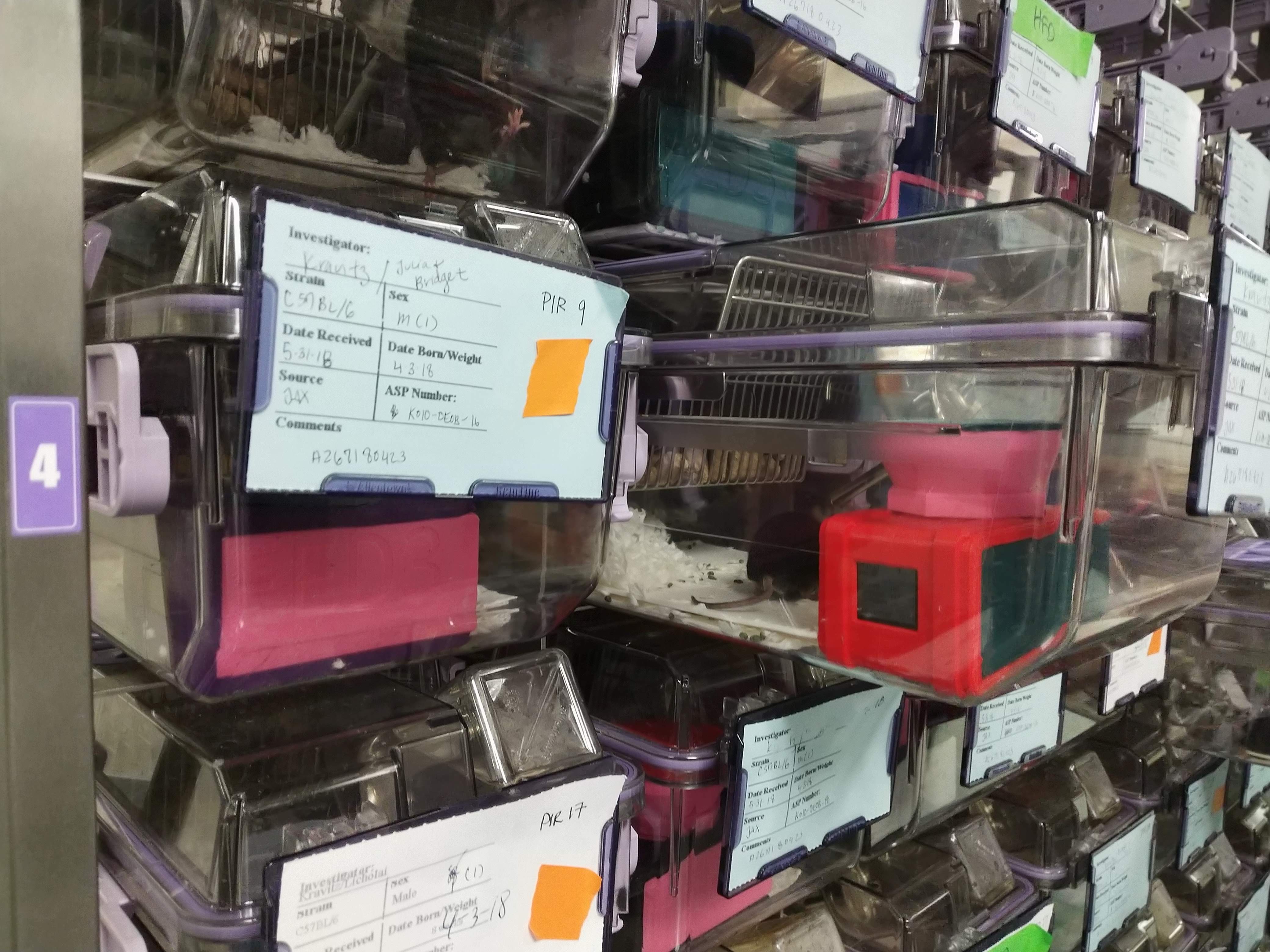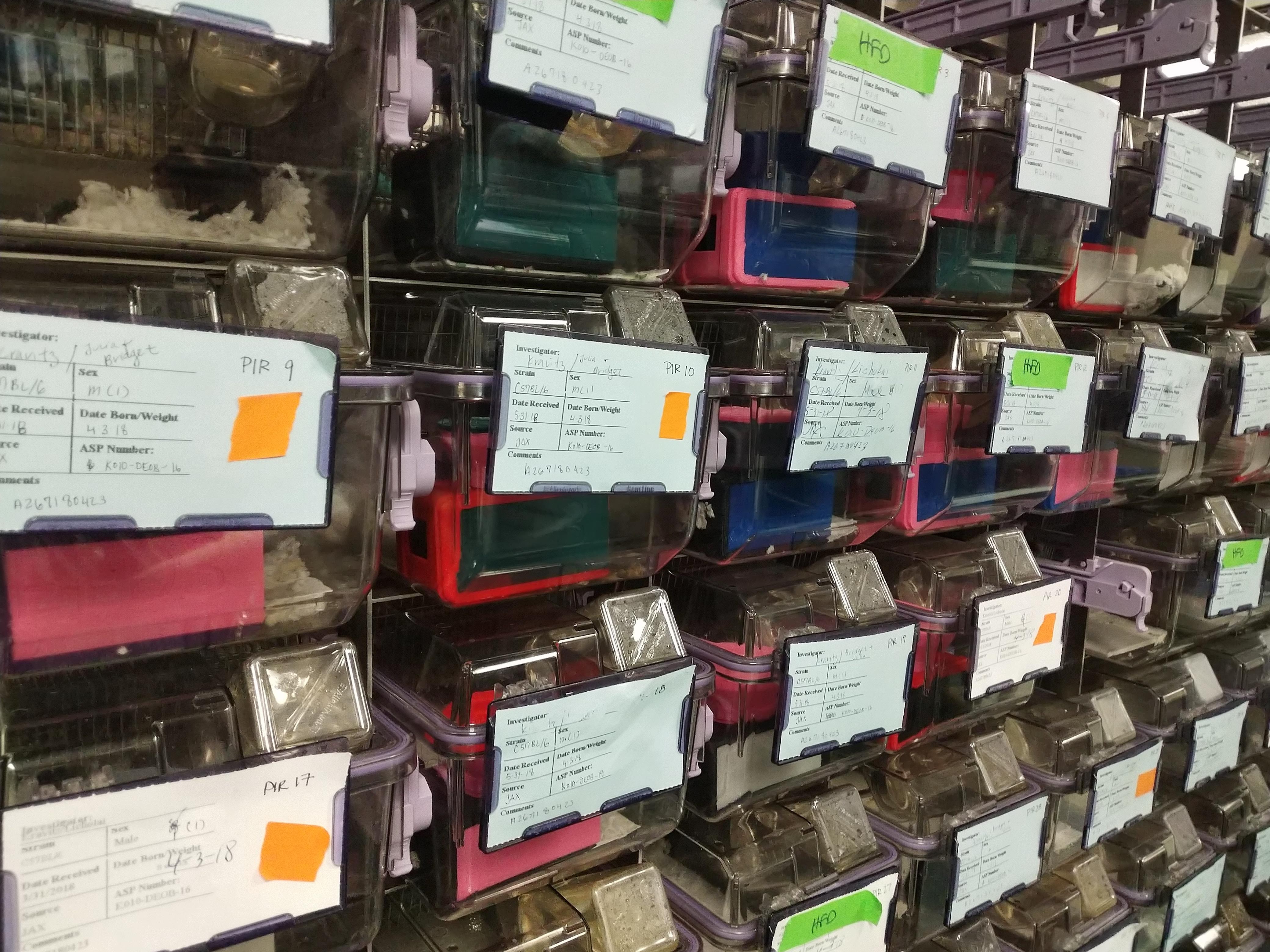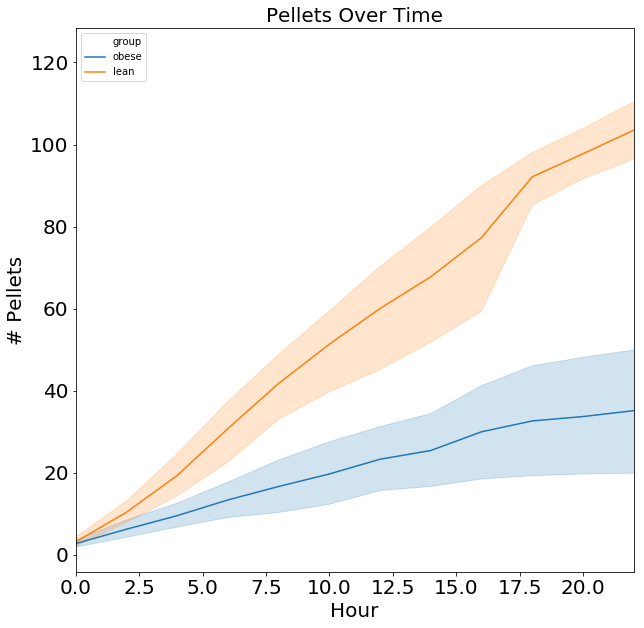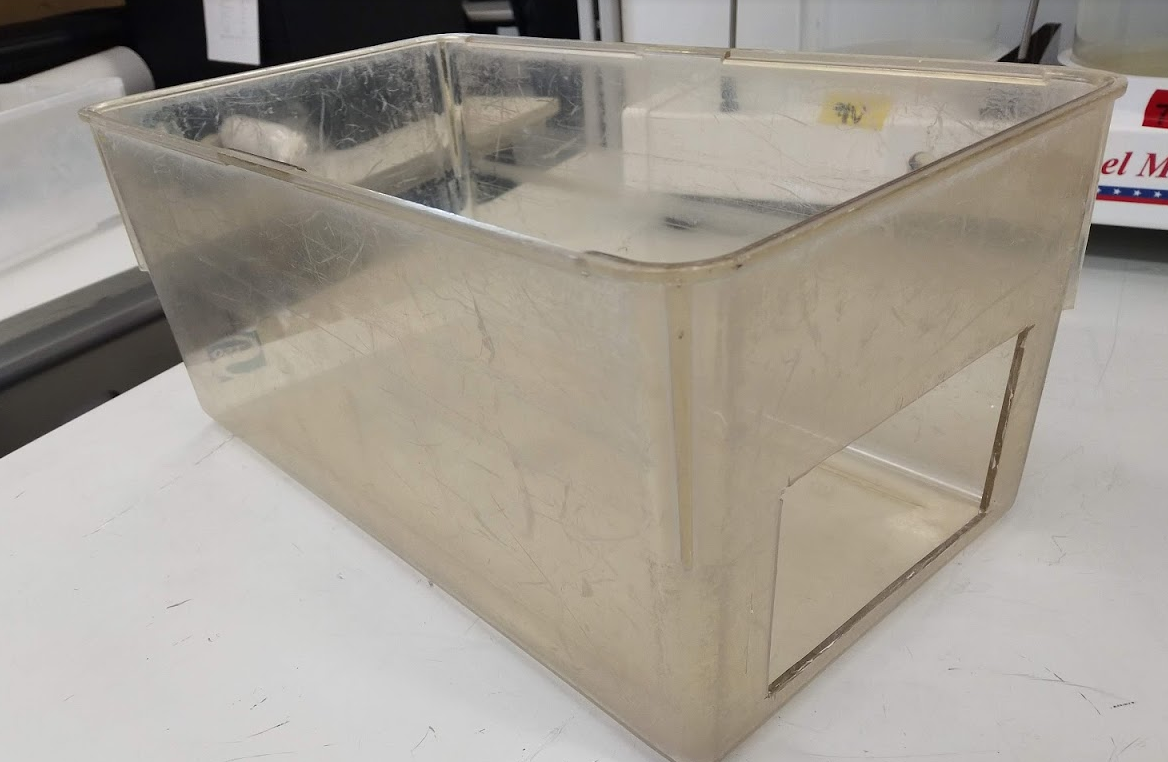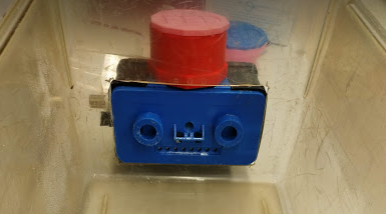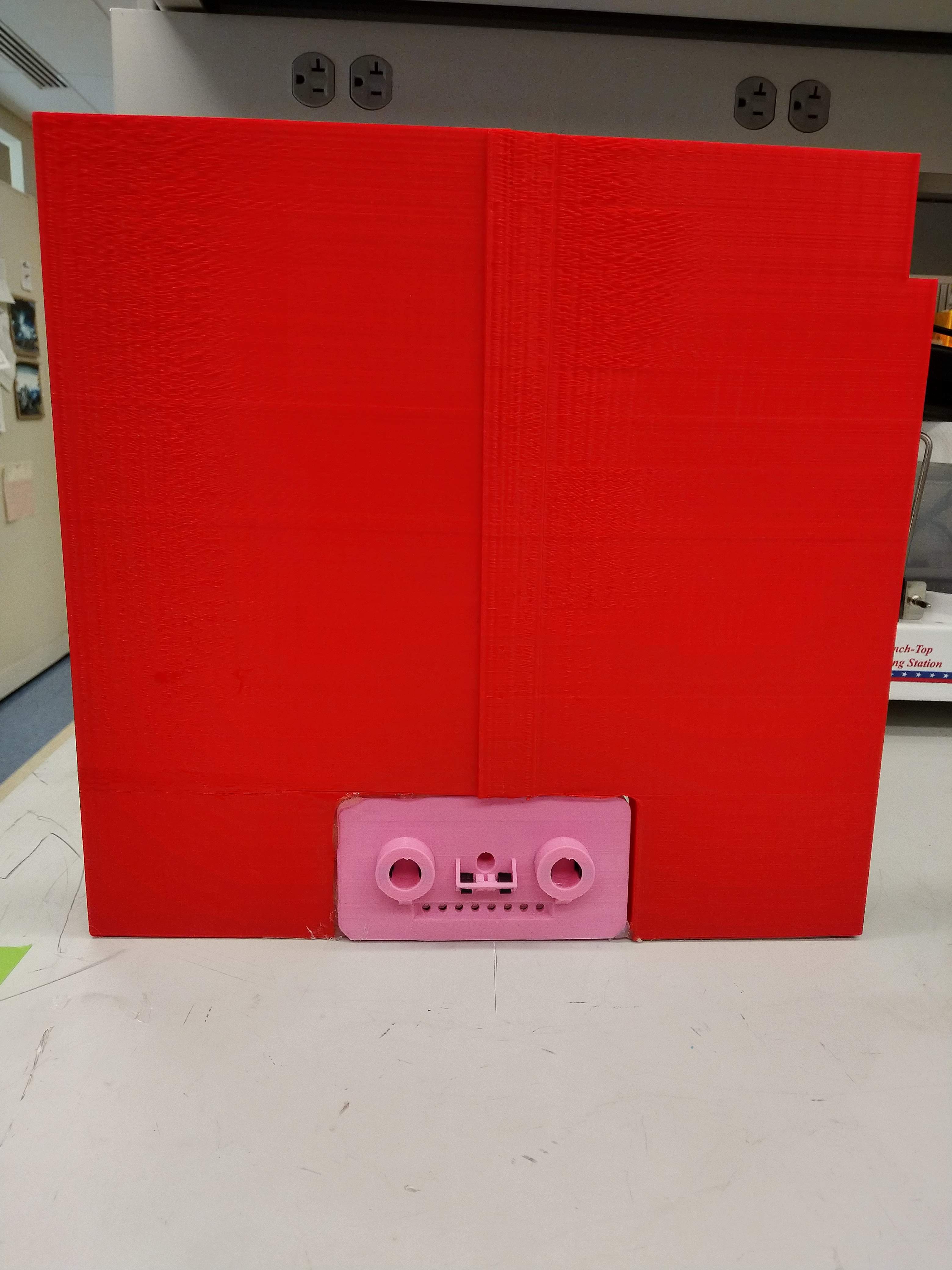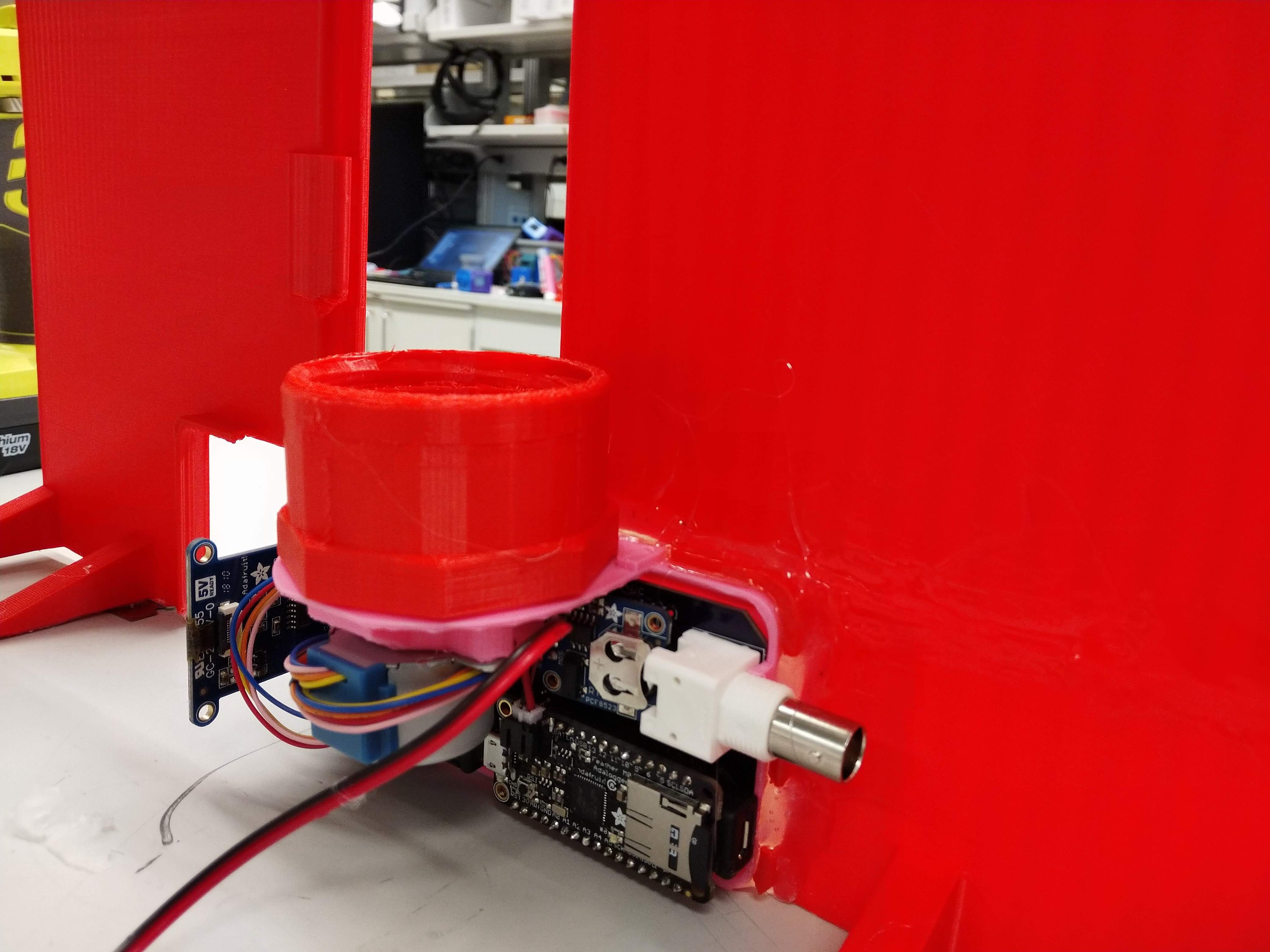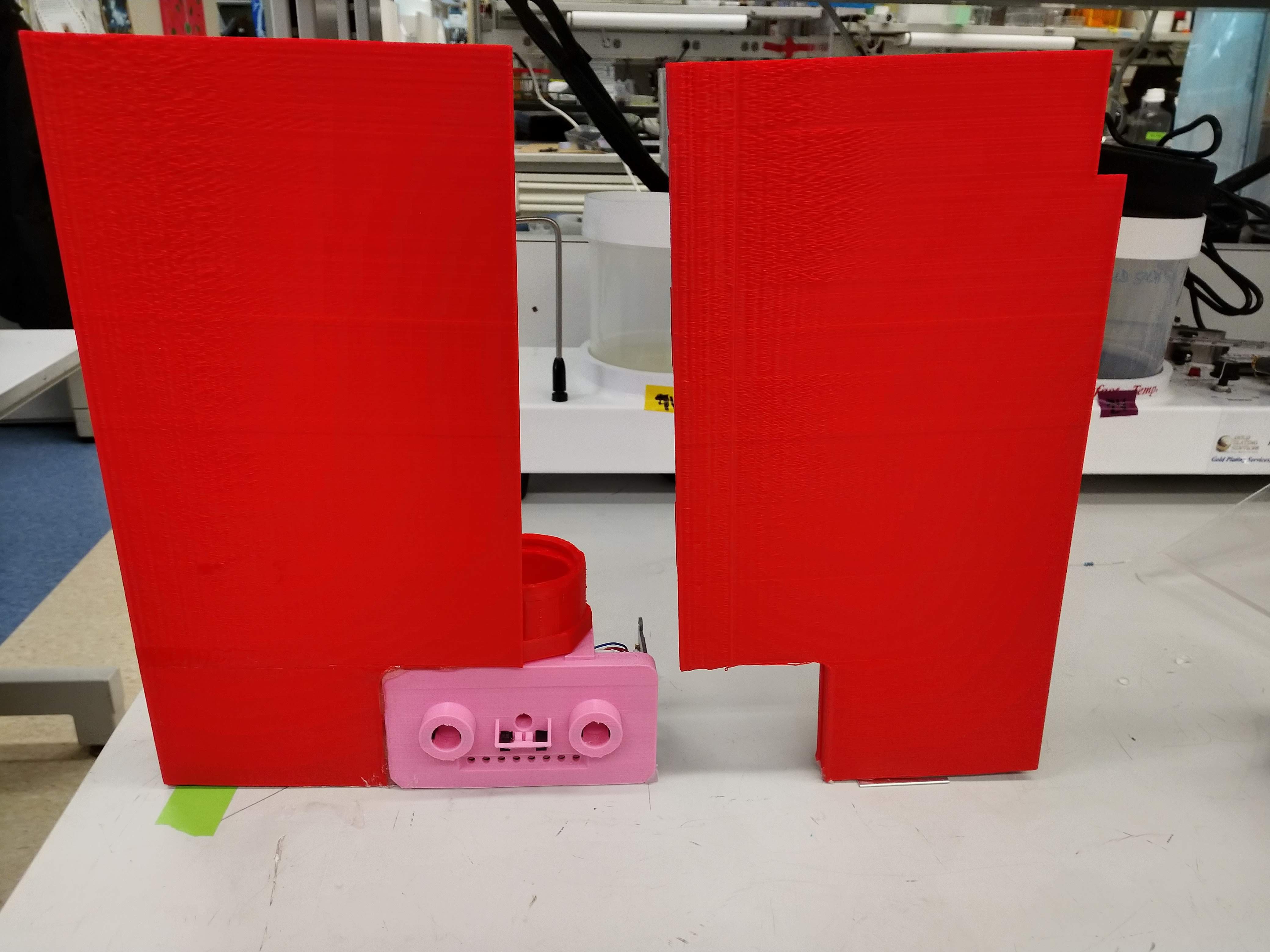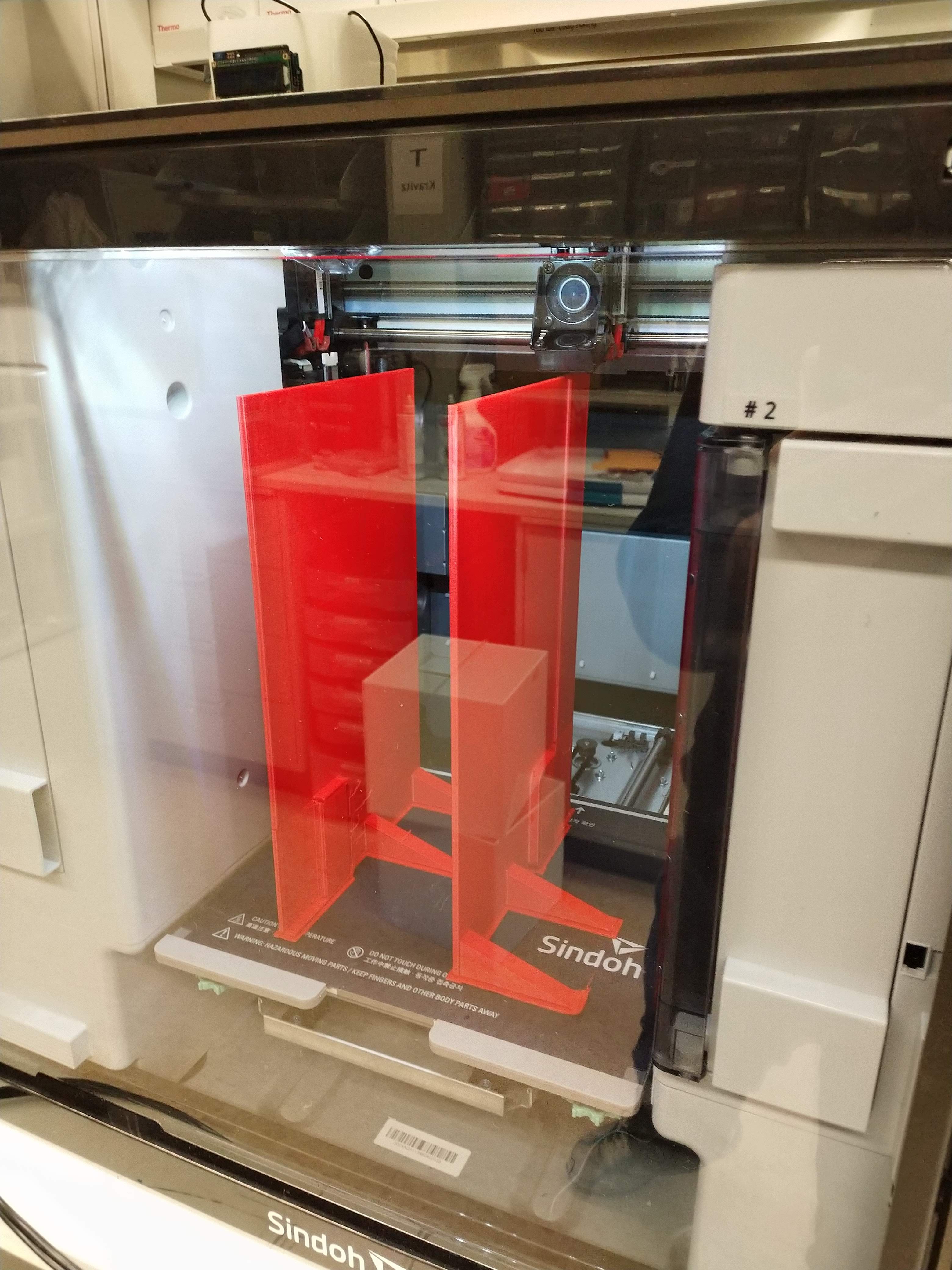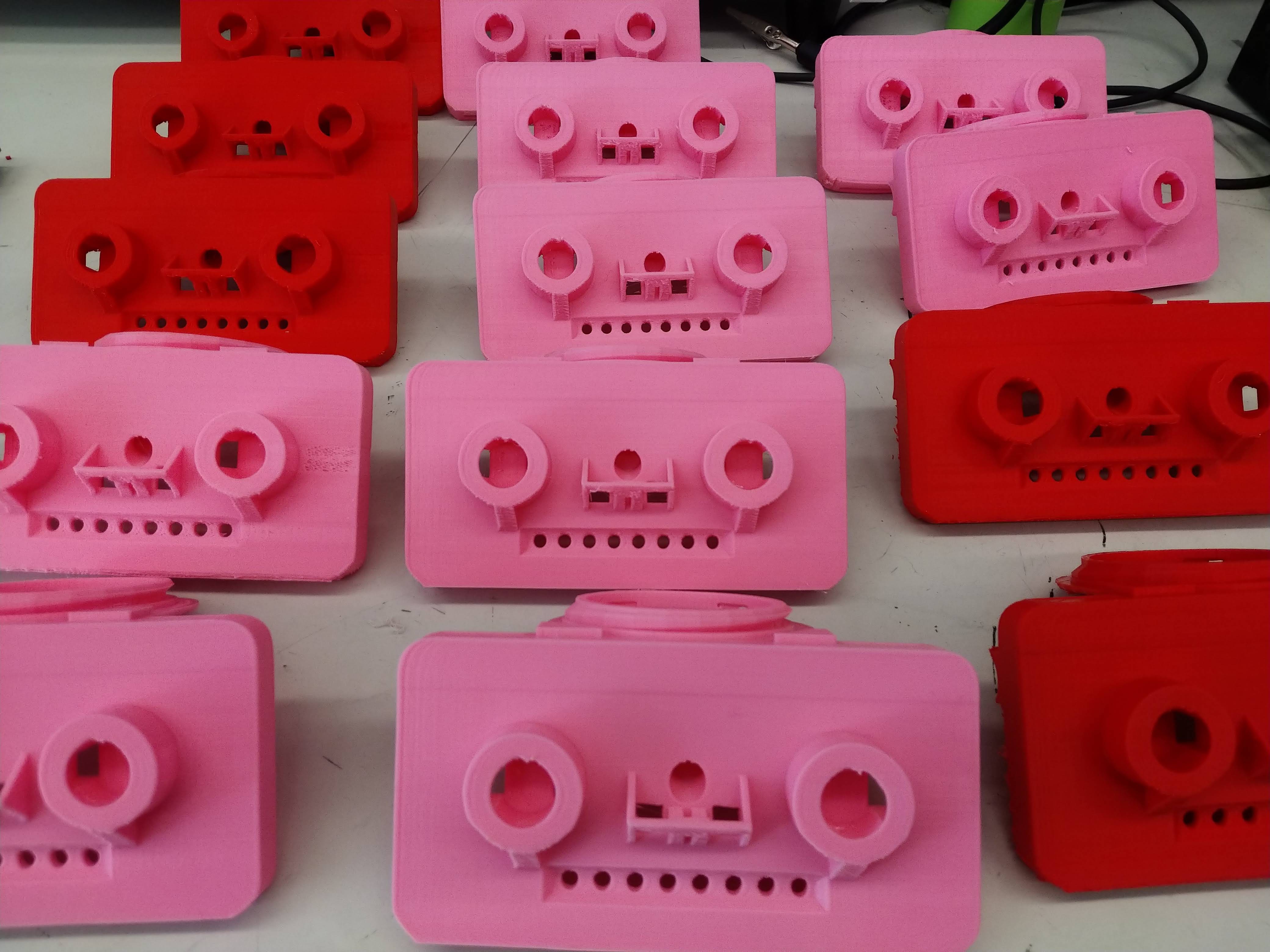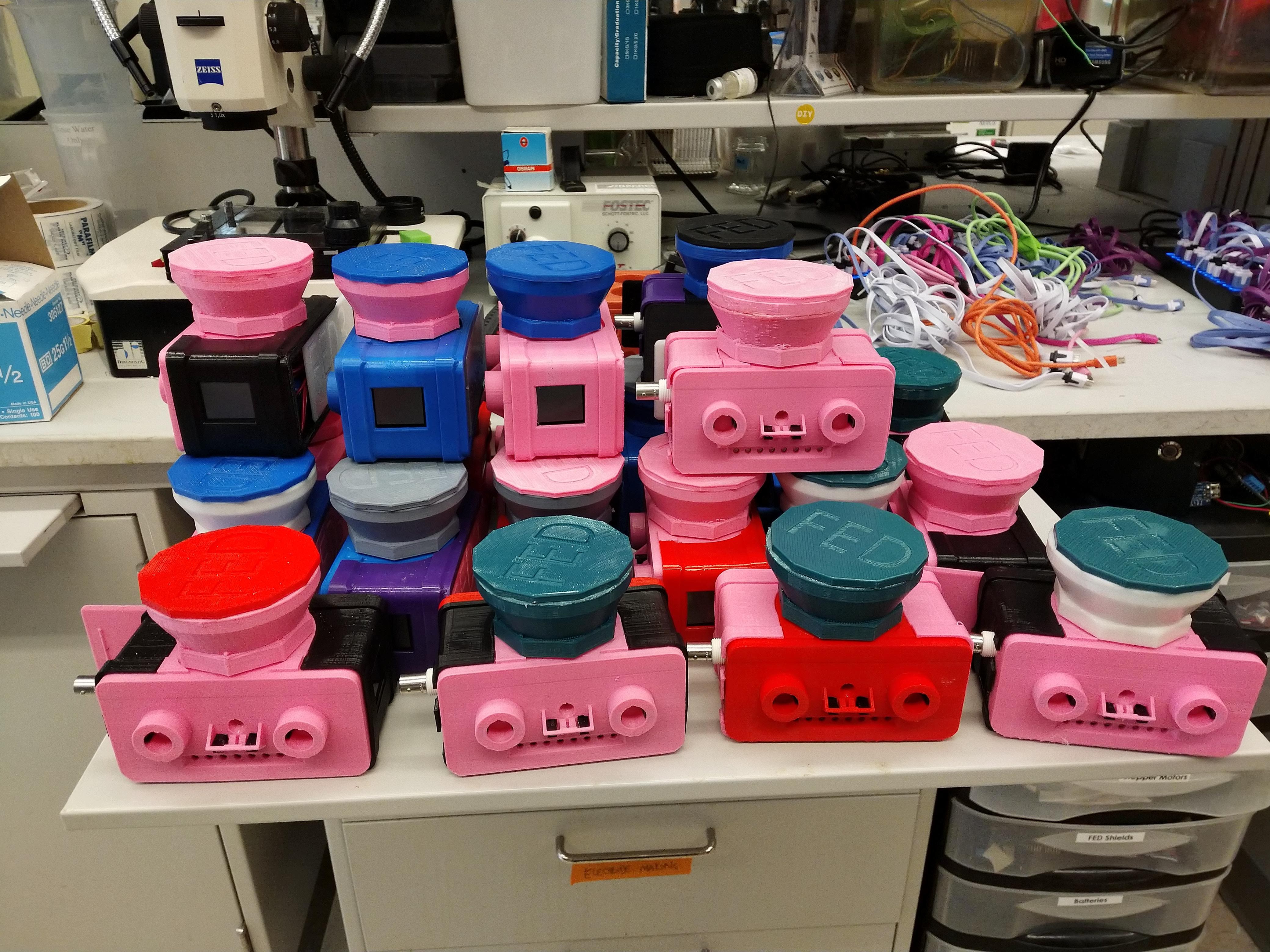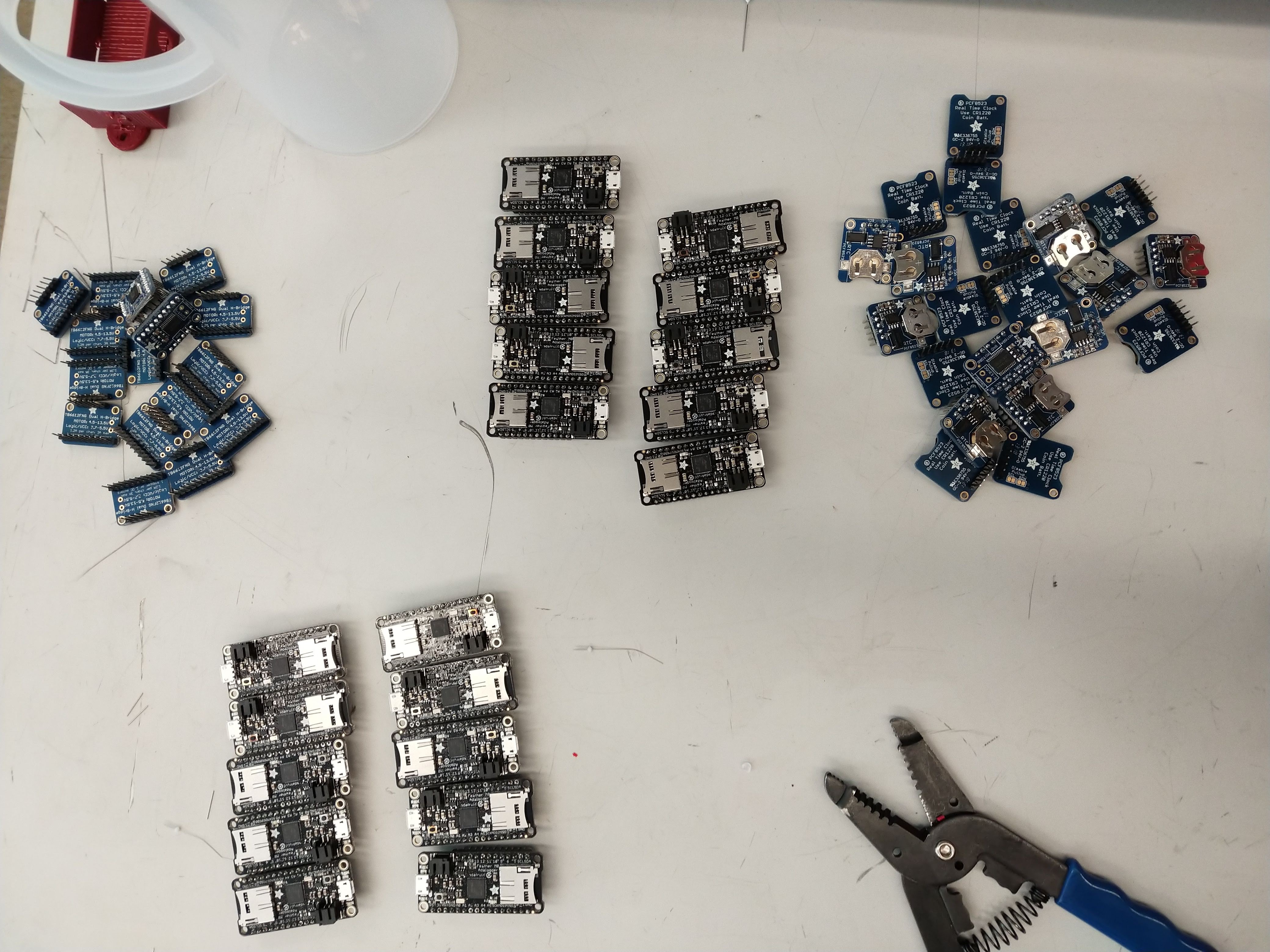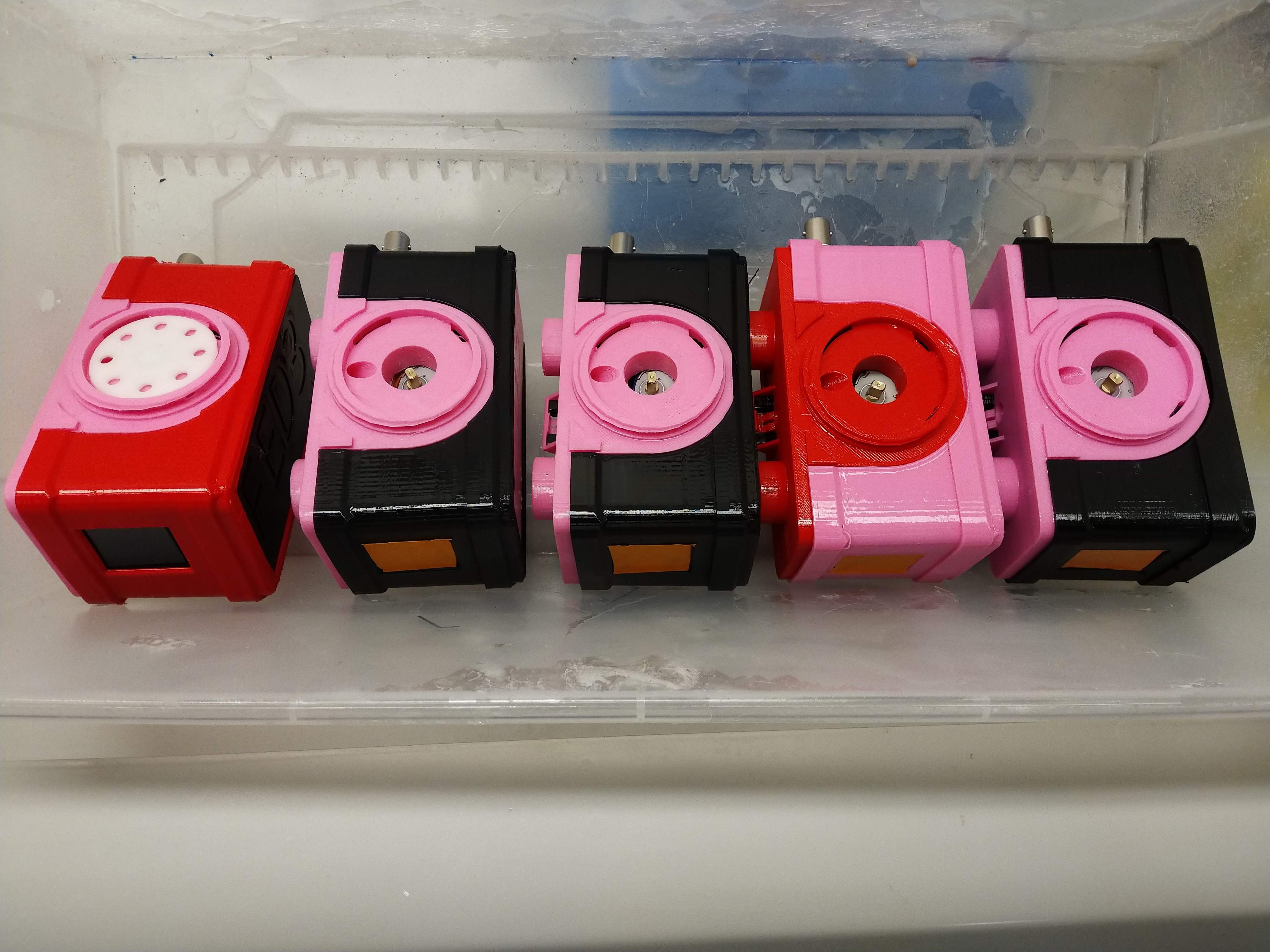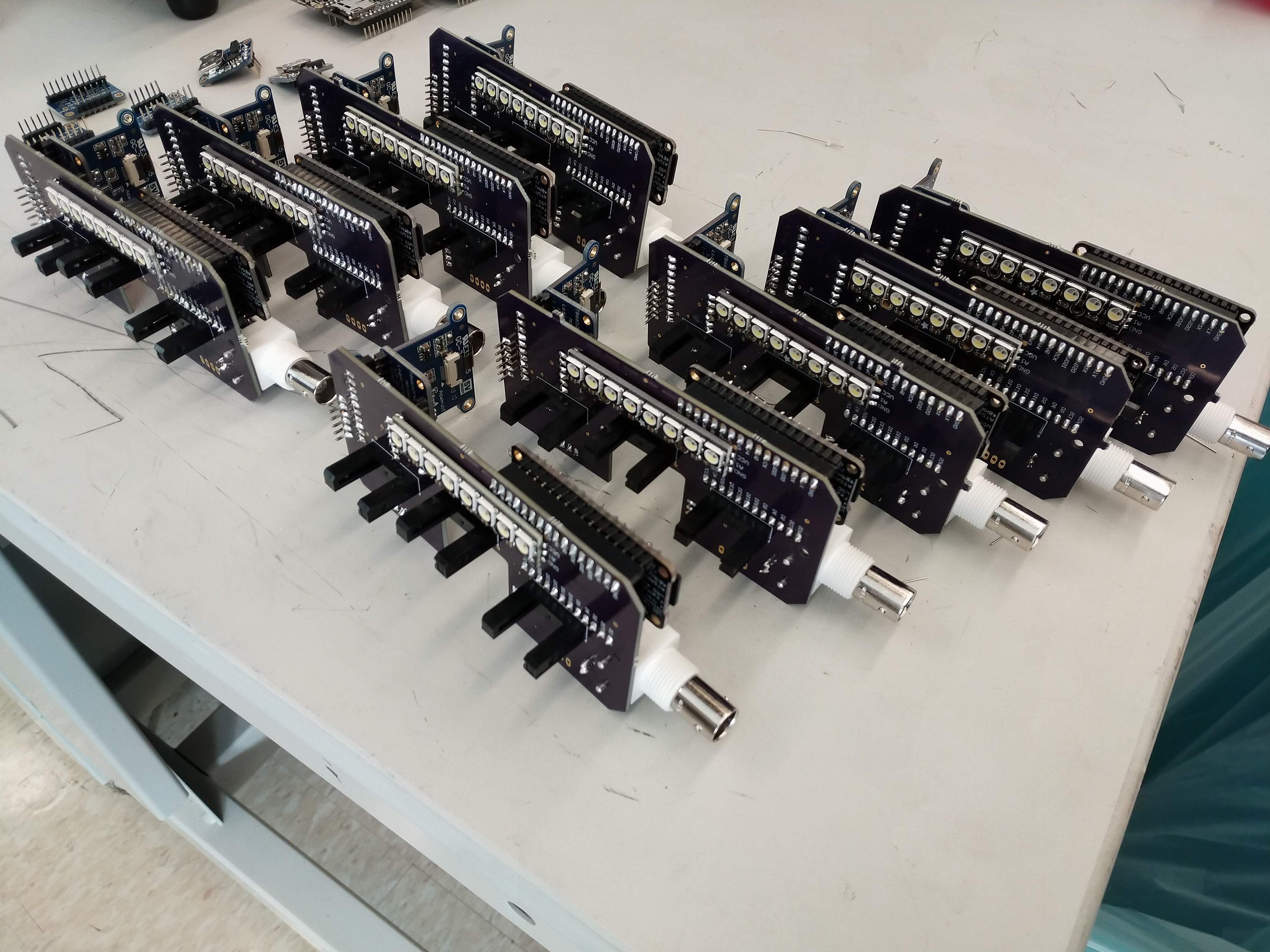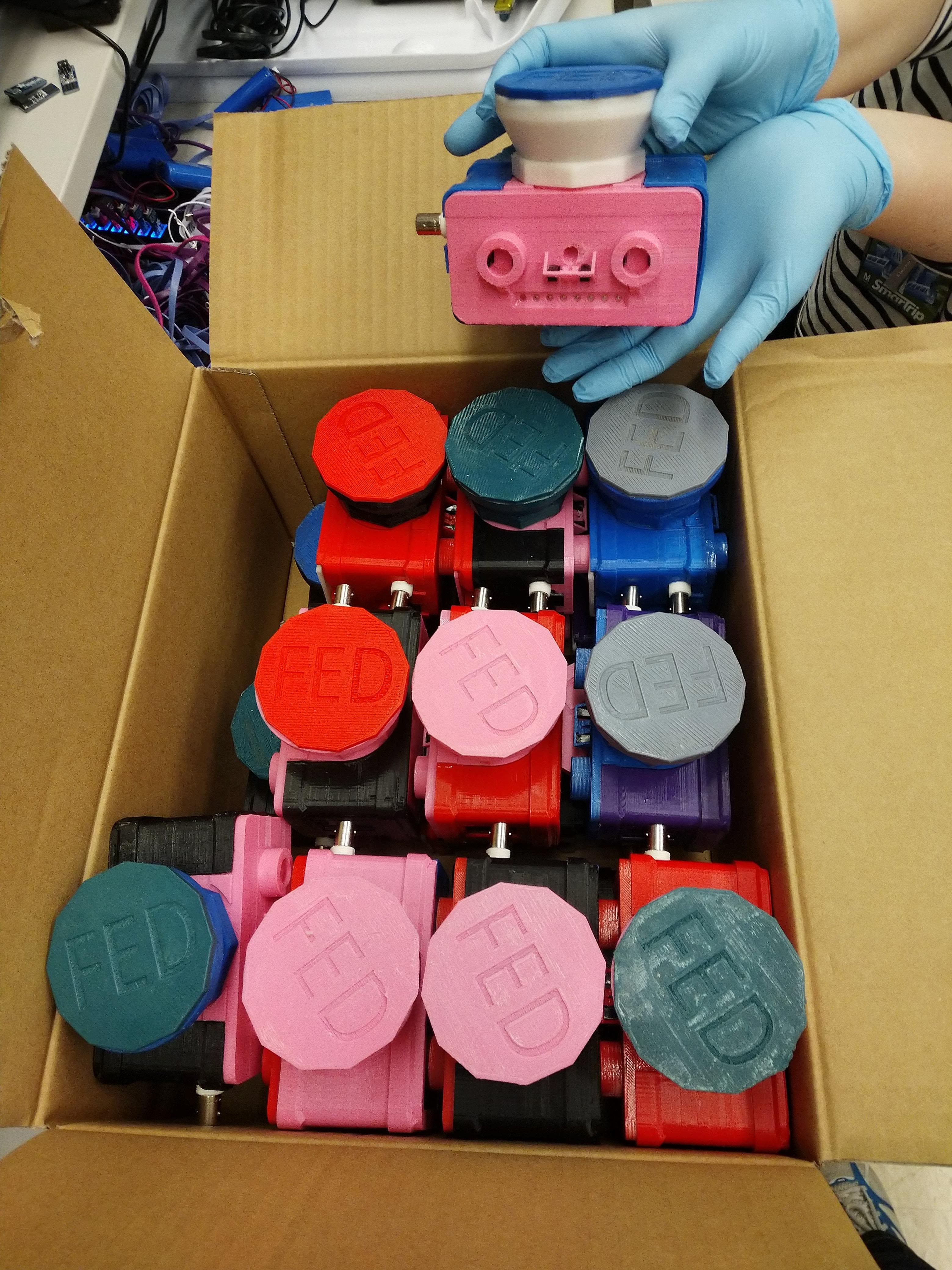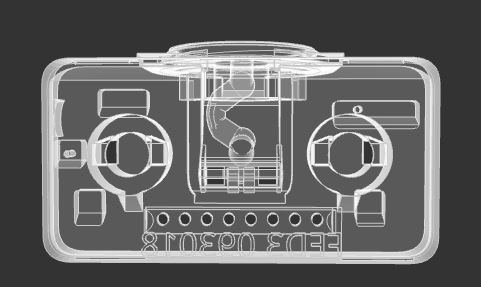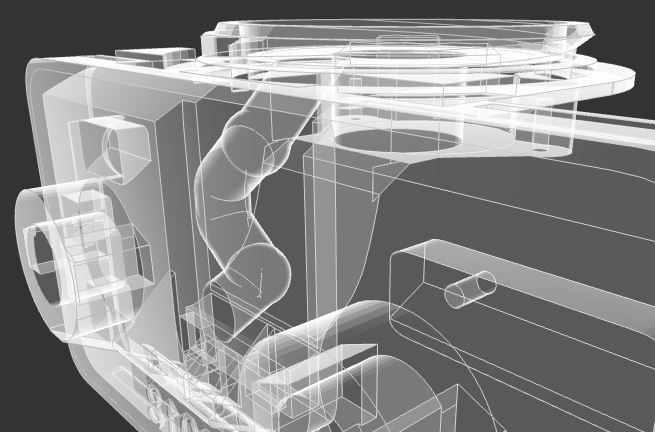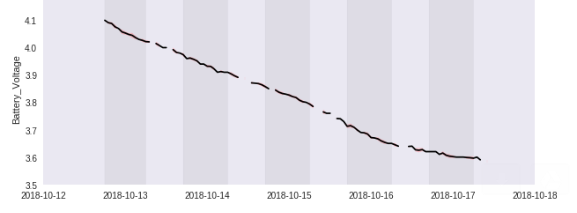-
FED3 wall mounting system (take 2!)
03/02/2019 at 20:31 • 0 commentsWe've recently been re-evaluating the utility of mounting FED externally to a cage or behavioral chamber, rather than placing FED3 in the cage itself. To faciliate this, we modified the front plate to include 4 magnet holes/mounts, and created a drill guide pattern for modifying the wall of a chamber to mount FED3 to it. We also used the "mini-hopper", which is available in the files area.
For mounting on a chamber or cage, it only requires drilling four 5/16" holes (for magnets) and two 2" holes (with a hole-saw) for the pokes and feeder. I was able to drill these and insert magnets in about 10 minutes. Video below, please contact me for modified FED3 front plate design and drill guide.
-
Improved dispensing
02/09/2019 at 18:27 • 0 commentsThe Achilles heel of any pellet dispenser is pellet jamming. There are several reasons for a jam, but one of them is that the pellets inside the hopper align in a way that impedes the movement of the dispensing disc. To combat this issue, I've modified the stepper code to make the stepper "vibrate" while dispensing. This can help shake up the pellets in the hopper and reduce jams.
Please leave feedback in comments if you try this update!
This log is also posted here:
-
FED3 for high throughput mouse operant behavior
01/25/2019 at 23:30 • 0 commentsOur lab is interested in how exposure to obesogenic diets might influence the willingness to work for palatable food, or to learn how to acquire such rewards. One way to test aspects of this is to perform an experiment in which a mouse learns to associate a specific task with the delivery of a reward. Since the amount of the reward and the work it takes the mouse to earn it are static in this experiment, it is called a "fixed ratio", or FR. We can then look at how quickly mice who are obese formed these associations compared to lean mice. Here are the weight curves showing how the "obese" group quickly gained weight on a high fat diet.
![]()
To test whether the obese and lean mice learned to acquire rewards (in this case a sugar pellet) differently, we used FED3 to launch a large-scale FR experiment between lean and obese mice. As you can see, the FED3 easily sits inside the home cages which are then housed in a rack in the vivarium.
![]()
![]()
(If you look closely you can see some of the cages with green tape on them labelled, "HFD," for high fat diet.)
We let the FED3s (running the Fixed Ratio program) run overnight, since that is when mice are most active. The next day, we pulled that data from the SD cards in each device, and used python to organize and plot our data.
![]()
As you can see, the lean mice learned to acquire more sugar pellets than the obese mice. This kind of straightforward experiment would have been very time consuming without FED3, which let us collect this data overnight!
-
FED build video!
12/20/2018 at 22:38 • 0 commentsCheck out our video detailing the parts and steps for building a FED!
-
FED modifcation to mount it on a wall
12/10/2018 at 14:53 • 0 commentsI was asked by another researcher about mounting FED to a wall, instead of placing FED in a cage. It is very do-able but requires a modification to the hopper to make it a bit smaller so it doesn't stick out in the front. STLs for the modified parts are in the files area here. With the smaller hopper, FED can be mounted on the outside wall of a cage like this:
I also went ahead and printed a wall to fit in our operant boxes. This wall divides off part of the box so the mice can't get behind the FED. I wasn't sure how this would work but it came out pretty nice. The wall had to be printed in 2 parts because of its size. It was a fun modification, STLs for the wall parts are also in the files area here.
![]()
![]()
![]()
![]()
-
Mass production!
12/10/2018 at 14:40 • 0 commentsOur lab is completing an experiment looking at long-term effects of obesity on motivation to work for food. The question is, "are obese mice more or less willing to work for food than lean mice?" One way this can be tested is with a "progressive ratio" schedule, in which the first pellet requires one poke, the second two pokes, the third four pokes, etc. We can ask when the cost will be too high to continue. You can read more about this here.
To test this in our experiment we needed 20 FEDs. So we decided to build them! It was the largest FED build we've attempted and it went super well. Building 20 is different from building 1, and we learned some things that I'll adopt in the design to make manufacturing easier. But we got 20 FEDs built in ~2 days. Photos from the build below:
![]()
![]()
![]()
![]()
![]()
![]()
![]()
-
Pellet path
10/24/2018 at 13:30 • 0 commentsSince we started making FED1.0 we found the hardest aspect of making a pellet dispensing to be.... dispensing pellets.
There are several issues that need to be resolved, two of which are dust and pellets landing correctly in the well. Dust is a serious issue that can jam the FED. We have found that printing the front plate at a finer resolution (see 3D printing log) helps greatly with reducing dust. Basically making the pellet path as smooth as possible for the pellets. We have also noticed that pure sucrose pellets make much less dust than grain based pellets, which can be useful if you don't need to provide the whole diet to the mouse via FED. Lastly, we included "drain holes" in the design to try to remove some dust. That said, if you run FED for multiple days you should watch out for dust forming and try to clean it out.
The second issue was getting the pellet to land correctly between the arms of the photo-interrupter. These little pellets are hard and they can tend to "bounce" when they drop out of FED. To slow the pellets down and minimize bouncing, we use a curved pellet dispensing path, shown here (courtesy of the excellent visualization tools at 3D Hubs). This seemed to solve the bouncing issue.
-
FED3 battery life
10/18/2018 at 16:06 • 0 commentsWe performed a real-world test with a singly hosued mouse training on FR1 for 5 days. Here is the battery discharge curve, indicating that FED3 can last about 5 days of continuous use on a charge. This can probably be improved by optimizing sleep modes further (it currently sleeps whenever a pellet is in the well), but it seems good enough for our purposes.
He took 345 pellets during this time, also note that pellets taken are higher at night.
-
First contact!
10/11/2018 at 21:46 • 0 commentsWe finally started using FED3 with mice! These mice are our 'beta testers' to see how FED3 works, how to break it, etc. This is a mouse that hasn't learned to use FED3 yet, I'll update this when he learns!
-
Pre-installed behavioral programs on FED3
10/09/2018 at 03:06 • 0 commentsFED3 includes SEVEN behavioral programs that can be selected directly from the FED, no computer needed. All of FED3's code is open source so you can tweak these programs further or write your own if you need to.
Free-feeding (FED3 acts like FED1/FED2)
FR1, FR3, FR5 (fixed ratio programs where a set number of pokes is needed to get a pellet)
Progressive Ratio (the number of pokes needed increases with each pellet)
Extinction (no pellets, but log behavior on left and right pokes)
Light tracking (a visual learning task in which the animal has to poke where the light is)
See these in action below:
Feeding Experimentation Device 3 (FED3)
Version 3 of our home-cage feeding device, FED. FED3 includes nosepokes and stimuli for behavioral training.
 Lex Kravitz
Lex Kravitz